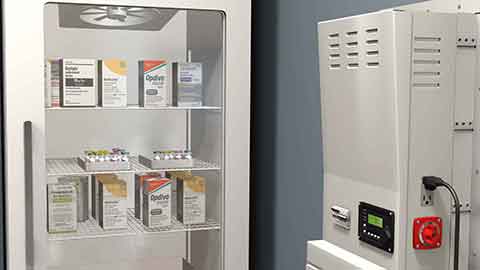What Does UPS Stand For? An Easy Guide to Understanding Uninterruptible Power Supply
In this dynamic world, no power supply is an option but necessary for most industries that function in the present scenario. It may be businesses that use computers or heavy machinery-based industries like factories, healthcare, and many more, wherein an abrupt loss of power might result in gigantic disruptions and monetary loss and even pose a risk to safety and health. That is where UPS-standing for Uninterruptible Power Supply-fights back. UPS systems are the silent warriors, coming in to keep things running without problems when the lights go dark.
What is a UPS?
A UPS system is a must-have appliance that can ensure essential equipment stays on and operational even when power supply failures happen. It doesn't matter whether it's a factory line assembly, healthcare centers, data centers toting rows of servers, or just your home office-without one, equipment will shut off due to power loss, which means it's likely to be destroyed and downtime hours could extend for a bit.
Unlike generators, which do not activate instantaneously, UPS gives backup power right at the flicker of the main power going out. Design and quick-switching technology ensure your equipment doesn't miss a beat.
Why Does One Need a UPS?
UPS systems are essential to numerous sectors mainly because they supply backup power reliably. Here is why they are crucial in various industries:
Prevention from Shutdown of Equipment: Most crucial devices, such as servers, computers, industrial machines, and hospital equipment, work properly by requiring a constant power supply. A sudden loss of power may cause malfunctioning, data loss, or even safety hazards. UPS systems ensure continued functioning for such devices when they are powered off.
Data: Computers in offices or data centers contain vital data. A blackout could suddenly erase or destroy that critical data. The UPS system allows users to save work and safely power down the equipment without losing important data.
Safety: An instant blackout could make manufacturing and transportation dangerous in an industrial setting. UPS continues other safety-critical systems, such as lights and alarms, thus stopping accidents.
Reduces Downtime: An interruption as short as one minute can cost businesses heavily. UPS systems reduce downtime by filling the gap between a power outage and backup solutions like generators, keeping everything operating smoothly.
How Does a UPS Work?
Let's dive into how it works. Here are the fundamental constituents that make a UPS system effective:
Battery: The heart of every UPS is its battery. When the power supply comes in from the mains source, it charges and energizes the battery. During a power cut, it acts promptly and provides an uninterrupted power supply to appliances.
Inverter: This converts the energy stored in the battery to usable electricity. It ensures that the right form of energy supplied by the battery also powers up all the connected devices.
Charger: The charger keeps the battery on standby in case of a power failure. It ensures the battery is always fully charged and ready to supply backup power.
Control Circuit: The control circuit can be compared to the UPS's "brain" because it identifies the actual power supply condition. Therefore, it will determine how to switch from the main power to the battery, supplying uninterruptible power.

UPS Types
Many UPS systems are available to fulfill different levels of protection and power capacity needs. Let's take a glance at common types:
- Standby UPS: This is the basic form of UPS, suitable for small-scale applications such as home computers or small office equipment. It stays inactive until a power outage occurs when it is switched to battery power and continues to power devices.
- Line-interactive UPS: This type of UPS can control voltage fluctuation without directly switching to the battery supply. It is suitable for use in offices, home offices, small businesses, etc.
- Online UPS: The UPS system continuously converts incoming power to battery power, so it is uninterrupted during a power outage. It is used in industries where minor fluctuations in power may initiate problems, such as data centers and other manufacturing units.
How To Use a UPS
Maintenance Checkup: Any equipment requires regular maintenance checkups. Check the battery to ensure it is charged and can power through the blackout.
Test the System: Periodically shut down all the equipment and simulate a power failure to ensure that your UPS will perform when you expect it to. This will ensure that your UPS will be ready during an actual power failure.
Train Your Team: If you are utilizing a UPS in a commercial environment, get your staff prepared and trained on how the UPS works and what to do when there is a power outage. Any difference in quick response can make all the difference between damage or data loss.
Conclusion
In today's world, where nearly every aspect of our lives depends on electricity, a sudden power outage can create chaos. That is where a UPS becomes essential. It does this because it ensures that critical devices in homes, offices, factories, or other environments have power even when the main supply is out.
With instant backup power, equipment is protected, data loss is prevented, and everything keeps running as if nothing is wrong. If you are a business owner or even a tech enthusiast looking for peace of mind, a UPS is always the smart thing to invest in for preparedness against the unexpected. Remember, then, that a UPS is more than a backup plan; it's a reliable shield that will keep out power interruptions.



